A History of the Pathology Department
by Philip J. Daroca, Jr., M.D.
Original publication: January 18, 2005
John Duffy’s “The Tulane University Medical Center: One hundred and fifty years of Medical Education” (1984) notes that in 1834 the College of Louisiana had 66 students in the institution of higher learning. On September 29, 1834, the New Orleans Bee announced on its front page “the establishment in this city of a medical college” – the Medical College of Louisiana. The announcement was largely the work of Dr. Thomas Hunt assisted by Drs. John H. Harrison and Warren Stone – not one of the three was older than 26.Read More
Dr. Hunt recognized that “a close relationship with Charity Hospital could provide ample clinical facilities and subjects for dissection – essential to the medical school’s success”. The prospectus of the new Medical School was signed by seven physicians who were to serve as professors: Drs. Thomas Hunt, Professor of Anatomy and Physiology; John H. Harrison, Adjunct; Charles A. Luzenberg, Professor of Principles and Practice of Surgery; J. Monroe Mackie, Professor of Theory and Practice of Medicine; Thomas R. Ingalls, Professor of Chemistry and Pharmacy; Edwin B. Smith, Professor of Materia Medica and Augustus H. Cenas, Professor of Obstetrics and Diseases of Women and Children. Harrison succeeded Hunt when he resigned in 1836. By December 28, 1836 the student body had grown to 22. Professor John L. Riddell succeeded Dr. W. Byrd Powell as professor of chemistry in 1836. Professor Riddell was a noted microscopist who invented the binocular microscope and first demonstrated the instrument in New Orleans in 1852. By the end of 1843 the medical school was housed in a handsome structure at the corner of Common and Philippa Streets. In February 1847 the medical college became, by legislative act, the Department of Medicine of the University of Louisiana. The medical department was given free access to Charity Hospital at all times. In March 1849 Professor John Harrison died and Dr. Thomas Hunt replaced him. The Chair of Physiology was renamed “Department of Physiology and Pathological Anatomy” because of Dr. Hunt’s interest in the latter. In his inaugural lecture he claimed for the medical school the distinction of having “founded the first professorship of special pathological anatomy in the United States”. In 1858 Dr. T. G. Richardson was appointed as chair of Anatomy and Dr. Stanford E. Chaille was elected as one of the two demonstrators in anatomy.
During the 1850’s Charity Hospital averaged 12,000-15,000 admissions per year. By the close of the year 1860/61, the University of Louisiana Medical Department had awarded 133 degrees in medicine. The University of Louisiana Medical Department suffered greatly reduced enrollments and had only four remaining faculty during the Civil War years. An attempt to conduct the activities of the school on November 2, 1863 failed and the school remained closed for the remainder of the war years.
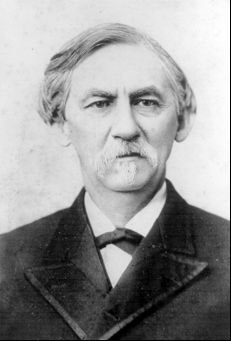 Dr. Stanford E. Chaille
Dr. Stanford E. Chaille
In November 1865 the Medical College of the University reopened its doors under Dean Tobias Richardson. On March 20, 1867, Dr. Stanford E. Chaille who, during the war, had been a surgeon in the Confederate Army, became Chair of Physiology and Pathological Anatomy – a position he held until his retirement in 1908. In 1874 Dr. D. Warren Brickell, former dean of the defunct New Orleans School of Medicine, organized the Charity Hospital Medical College. The tuition was well below that charged by the University of Louisiana Medical Department. In December 1874 Dr. Chaille criticized the administrators of Charity Hospital for granting to the new medical school rights and privileges equal to those of the Louisiana institution. In 1877 however, the Charity Hospital Medical College closed.Read More
A wealthy New Orleans merchant, Paul Tulane, bequeathed $1,250,000 to provide for a new university. In 1884 the various departments of the University of Louisiana were placed under the jurisdiction of the new institution, Tulane University. The changed status of the university resulting from the Paul Tulane gift had little immediate impact on the medical department. The new Board of Administrators conceded a large measure of autonomy to the medical department. Dr. Chaille became dean in 1885. As dean for 22 years, he helped usher Tulane Medical School into the era of modern medicine. The school’s faculty numbered 19. In that year Rudolph Matas was listed on the faculty as demonstrator of anatomy. In November of 1893 the entire medical department of the university became housed in the Richardson Memorial Building on Canal Street. In 1902 Mr. Alexander Hutchinson bequeathed $800,000 to Tulane University in memory of his wife Josephine. As a consequence of that gift the Richardson Building was renovated in 1907 as the Josephine Hutchinson Memorial Building. A year later an additional new Richardson Building was completed on the uptown campus. With an outstanding faculty and unrivaled facilities of Charity Hospital, the Tulane Medical Department entered the 20th century as the premier medical school in the South. On May 10, 1901, Dr. Chaille offered to resign his position as Dean and Professor of Physiology and Pathological Anatomy but the faculty unanimously reelected him to both positions. However in January 1907 the Tulane Board voted to make retirement mandatory for all professors at age 65. Chaille was 76 at the time. Chaille was asked to continue one more year - allowing him to complete the fiftieth year of his official service to the medical department.
In late 1908 the uptown campus Richardson Memorial Building was ready for occupancy for the first and second year medical students. This system, in which the preclinical years were taught at the Richardson Building and the clinical years at the downtown campus near Charity Hospital, remained until 1963 following which the 1st and 2nd year medical students were integrated on the downtown campus on Tulane Avenue.
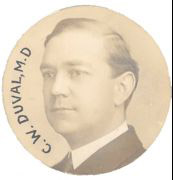 Charles W. Duval, M.D.
Charles W. Duval, M.D.
In March of 1908 separate Chairmanships were established for Physiology (accepted by Gustav Mann of Oxford University) and for Department of Pathology and Bacteriology (accepted by Charles W. Duval) who remained on the faculty until 1942. Chaille’s successor as dean was Dr. Isadore Dyer, among whose accomplishments was the establishment of the only leprosarium in the United States at Carville, LA.Read More
By the 1920’s the old Hutchinson Building on Canal Street was antiquated and overcrowded. By summer 1927 the faculty decided that a new medical building should be erected adjacent to Charity. On December 10, 1930 the new Josephine Hutchinson Memorial Building on Tulane Avenue (adjacent to Charity Hospital) was dedicated.
On July 15, 1942 Dr. Kostmayer was appointed dean for the duration of the war (replacing Dean Lapham who was called into military service). Dean Kostmayer served for three years. At the close of the war Dean Lapham returned to his duties.
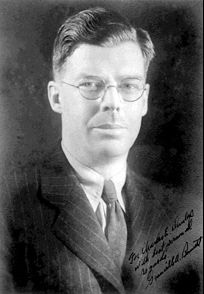
Dr. Granville Bennett
The Department of Pathology and Bacteriology in 1942-43 consisted of three assistant professors: William Herbert Harris, Andrew Vallois Friedrichs, and Samuel Harvey Colvin. Granville Bennett, M.D. was appointed as the Chair of the Department on May 1, 1943. He served as Chair from 1943-1944. He resigned on July 31, 1944. Dean Kostmayer appointed Charles Dunlap, M.D. as Acting Chair of the Department of Pathology.

Dr. Charles Dunlap
In 1944-45 the Department of Pathology and Bacteriology grew to five professors and five instructors. Charles Edward Dunlap, M.D., was appointed as Associate Professor and became Chairman in 1945. Chapman Hunter Binford, M.D. and William Howard Sternberg were instructors. At his memorial it was said of Dr. Sternberg that “ ‘Will’ touched those around him as a teacher, physician, friend and good Samaritan.Read More
He had a gentle spirit, a fulfilled life, and an illustrious career. He was a pioneer in gynecologic and endocrine pathology. As co-director of the Tulane Cytopathology Laboratory from 1963-1984, he proved to be a superb cytopathologist. In the 1960’s he devoted an increasing amount of time to cytogenetics, anticipating the future of that discipline. He created the Cytogenetics Laboratory which eventually evolved into the Hayward Genetics Center (he serving as Director from 1978-1984). He had an international reputation in ovarian pathology”.
In 1946-47 Charles Dunlap, M.D. was Professor and Head of the Department of Pathology and Bacteriology. Additional instructors included Guillermo Manuel Correra and James Arey. In 1947-48 the department included not only William Herbert Harris Sr., M.D. but also William Herbert Harris Jr., M.D.
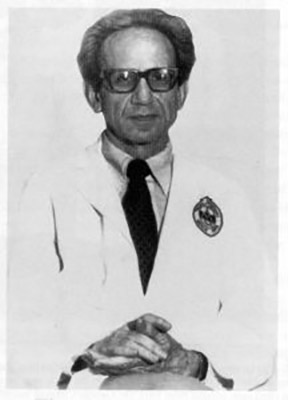
Dr. William Howard Sternberg
In 1948-49 this department became the Department of Pathology and William Howard Sternberg, M.D. was an assistant professor in that year. The Department included 5 professors and 5 lecturers and 3 instructors. In 1948-49, George Henry Hauser, M.D. joined as lecturer in the department.
In 1949-50 Wallace Henderson Clark, Jr., M.D. and John Henry Dent, M.D. joined the Department of Pathology as instructors.
In 1951-52 Emmanuel Farber, M.D. joined the Department of Pathology as Assistant Professor. In 1951, Professor Morris Shaffer renamed the recently separated Department of Bacteriology as the Department of Microbiology.Read More
In 1953-55, Walker B. Sorrell, M.D. joined the Department of Pathology as an Instructor in Pathology, under a Traineeship in Pathology of the National Cancer Institute.
In 1954-55 additions to the department included Herschel Sidransky, M.D., and John Moossy, M.D. Ruth Kirschstein, M.D. joined as Instructor of Pathology as a Fellow of the National Heart Institute, supervised by Dr. Charles Dunlap. She left Tulane to eventually fill a post at the NIH in clinical and experimental pathology research. In 1974, she became the first woman to become Director of the National Institute of General Medical Science at the National Institutes of Health.
By 1955-56 additions included Friedrichs Henry Harris, M.D. and Henry Clement Pitot III, M.D. as instructors. Dr. Charles Dunlap strongly encouraged and supported faculty members in developing investigative programs. Dr. Emmanuel Farber along with Drs. Henry Pitot and Herschel Sidransky developed a program in biochemical pathology that received grants from the National Institutes of Health for research projects and training. Dr. Henry Pitot was a direct descendent of James Pitot, who following the Louisiana Purchase was the first democratically elected governor of New Orleans. Dr. Henry Pitot was for many years Director of the McArdle Laboratory for Cancer Research at the University of Wisconsin in Madison. Drs. Henry Pitot and Herschel Sidransky were the first fellows in the Program. Dr. Wallace Clark developed an investigative program in Dermatopathology and electron microscopy.
In 1957-59, Margaret “Margôt” G. Hamilton joined the department as Instructor of Pathology and was later promoted to Assistant Professor of Pathology.
Also in 1957-58 Richard Jay Reed, M.D. became instructor in the department. He was to become the premier Surgical Pathologist of the department. Dr. Reed in his introduction to “New Concepts in Surgical Pathology of the Skin” wrote these words – “the ability to integrate microscopic findings into a meaningful interpretation is the distinguishing characteristic of a pathologist and is the art of pathology.” No one epitomizes those attributes more than Richard J. Reed, M.D. Dr. Reed is a “pioneer in dermatopathology and surgical pathology and his research has been influencing medical practice for much of the past 40 years. He has been a mentor and role model to two generations of Tulane trained dermatologists and pathologists. In appreciation of his many contributions to the field of surgical pathology and dermatopathology former students and friends joined together to establish the Richard J. Reed Professorship in Dermatopathology.” The Richard J. Reed, M.D. Award has been established to recognize outstanding resident performance in Surgical Pathology.
In 1958-59 Herbert Ichinose, M.D. became instructor in the department and Robert Craft Smith, M.D. became a lecturer in the department.
In 1959-60 Richard Lawrence Kempson, M.D. was appointed as Instructor in the department.
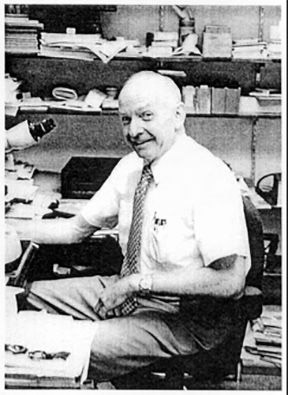
Dr. Richard Jay Reed
In 1961-62 Jerald Rudolph Schenken, M.D. joined the department as Assistant in Pathology.
In 1962 Emmanuel Farber of the pathology department received the Teplitz Award of the American Cancer Society for meritorious investigation by a scientist under age 45.
In 1962-63 Sidney Sigfried Schochet, Jr., M.D. joined the department as Instructor. Also, James C. Harkin, M.D. joined the Department of Pathology as Associate Professor. He was in charge of the electron microscopy research laboratory and neuropathology. Dr. Harkin received a Research Career Development Award from the National Institutes of Health, and was asked by the Armed Forces Institute of Pathology to write the Tumors of the Peripheral Nervous System fascicle, which he did in collaboration with Dr. Richard J. Reed.Read More
In 1963-64 Robert Lewis Flinner, M.D. joined the department as Assistant Professor.
In 1964-65 instructors Harry Prater, Jr., M.D. and Irma Overby, M.D. joined the department and in June of 1964, Dr. Alfred Marshak joined as a full Professor. His title was the American Cancer Society Professor of Experimental Pathology (Molecular Biology).
In 1965-66 Hans F. Smetana, M.D. joined the department as did Margaret Sheppard Skinner, M.D.
In 1967-68 Nina Dhurandhar, M.D. joined the department as Instructor. She established fine needle aspiration cytology at the Tulane University Medical Center.
In 1969-70 Lawrence Max Roth, M.D. joined the department as Assistant Professor. His contributions in gynecologic pathology expanded upon Dr. Sternberg’s work.
In 1970-71 Robert Edward Treuting, M.D. and Noberto Aaron Schor, M.D. joined the department as Assistant Professors.
In 1972-73 Virginia Maria Inigo Miller, M.D. joined the department as Assistant Professor. On December 1, 1973 groundbreaking ceremonies for the Tulane University teaching hospital was held.
1974-75 marked the final year that Charles Dunlap, M.D. chaired the department and in that final year the Department of Pathology included 2 Emeritus Professors, 5 full Professors, 3 Associate Professors and 3 Assistant Professors. The department had grown under Dr. Dunlap’s tenure, which began in 1944 and included 5 professors and 5 instructors. Dr. Charles Dunlap endeared himself to sophomore medical students in his final lecture yearly in the second year course. All will remember his words, “The love and respect and the affection which you will soon command as Doctors of Medicine – these are not things of your own making. These things have been earned for you by the decency and the humanity of countless generations of good men, of all faiths, over the past 3000 years. These men are dead and for the next few years, you will hold in your own hands this magnificent heritage. I hope that when it comes your turn to hand it on to your sons, not one of you will have cause to be ashamed”.
The official dedication of the Tulane Medical Center Hospital and Clinic was held on September 23, 1976. The clinic had already opened in August of 1976. The first surgical procedure took place on December 7, 1976. Dr. James C. Harkin performed the first frozen section in the new hospital on December 17, 1976.
In 1975-76 John Jarrell, Jr., M.D. joined the Department as Assistant Professor.
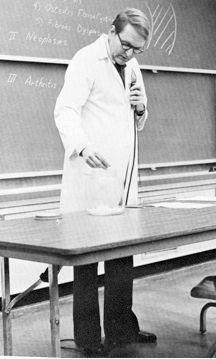
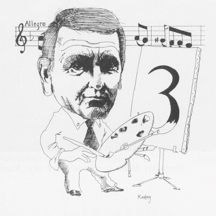
Dr. Horton Anton Johnson
Horton Anton Johnson, M.D. assumed the Chair of Pathology in 1975. Dr. Johnson, affectionately known to the students as “HoJo”was a man with a wide breadth of learning in the humanities for which he was deeply respected. During his tenure the tutorial approach to teaching assumed a prominent component of the sophomore course in pathology. The pathology course achieved Owl Club Award recognition for outstanding course during his tenure. Dr. Johnson achieved Owl Club recognition for his teaching abilities and his students will remember his now famous “Rule of 3” regarding any disease process, i.e. any student who retains three salient characteristics of each pathologic disorder studied will have achieved a sound knowledge base upon which to build. Philip J. Daroca, Jr. M.D. joined the department as Assistant Professor in 1975. Mathurin Jerome, M.D., Clinical Pathology, joined the department in 1976. Read More
In 1976-79 Howard Quittner, M.D. joined the department as Professor of Pathology and Adjunct Professor of Biochemistry. Patrick Donovan Walker, M.D. (nephropathology) joined the department as Assistant Professor in 1979. Emmanuel Shapira M.D. joined the department in 1979 as professor of Pathology and Pediatrics. He eventually became Chief of the Section of Genetics.
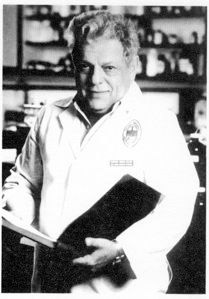
Dr. Emanuel Shapira
In 1980 Janis Page White, M.D. joined the department.
In 1981 David English Smith, M.D. who is, currently in Galveston, Texas and is a volunteer instructor at UTMB, joined the department as Professor of Pathology while also serving as an Associate Dean of the School of Medicine. In 1983 Bryce Owen Bliss, M.D., a former resident, joined the department as Professor of Pathology as did George Louis Leonard, M.D. as Associate Professor of Pathology. George L. Leonard, M.D. had a deep interest in the history of medicine and he chaired the arrangements committee for the meeting of the American Association for the History of Medicine (AAHM) in New Orleans, in 1982. Theodore William Koerner, Jr., M.D. also joined the department as Assistant Professor (Clinical Pathology). The academic year 1983-84 was the last to be chaired by Horton A. Johnson, M.D.
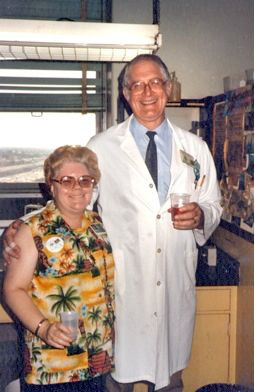 Dr. Bryce Bliss
Dr. Bryce Bliss
and Ms. Ledonia Michel
In 1984-85 the Acting Chairman of the Pathology Department was Bryce Owen Bliss, M.D. Under his tenure Steve Michael Covington, M.D., as Assistant Professor, and Waltraud Maria Watzinger, M.D. as Assistant Clinical Professor in Cytopathology became academic staff to the department.
1986-87 Richard J. Reed, M.D. became Acting Chairman of the Department. Academic staff added to the department included Harry T. Pigman, M.D., as Assistant Professor, Donald R. Pulitzer, M.D. as Clinical Instructor, and Nancy Covington, M.D., as instructor.
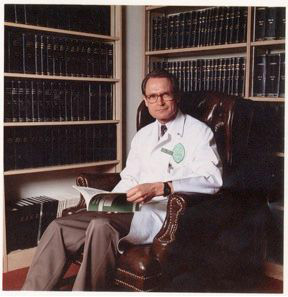 Dr. Michael A. Gerber
Dr. Michael A. Gerber
1987-88 Michael A. Gerber, M.D. assumed the Chair of the Department of Pathology. His tenure marked the inception and development of significant and substantial basic research and a Molecular Pathology Section of the department. Additions to the department included Assistant Professors Pamela C. Martin, M.D. and Lynn Bernal-Green, M.D.
In 1988-89 Cesar Fermin, Ph.D. and James S. Malter, M.D. joined the department. E. Randolph Eckert, M.D. joined as Instructor. Dr. Fermin created the Centralized Tulane Imaging Laboratory (CTIC).Read More
The CTIC was funded in part by a grant from the Louisiana Board of Regents, and was recently updated with another grant from LBoR, Deans’ Funds, outside donations, and departmental funds. The objective of the CTIC is to provide Tulane faculty, students, and trainees with a state-of-the-art imaging facility capable of publication and presentation quality images. The CTIC is used by hundreds of Tulane and outside staff and it serves a very important academic teaching, research, and training function.
In 1989-90 Sanda Clejan, Ph.D. joined the department as Professor of Pathology. Assistant professors joining the department included: James H. Harrison, Ph.D., Lee Henderson, Ph.D., Lidija M. Petrovic, M.D.
In 1991-92 Terence T. Casey, M.D. joined the department as Associate Professor and Flora B. Shoaf, M.D. joined as Assistant Professor. In 1991 the department was renamed the Department of Pathology and Laboratory Medicine.
In 1992-93 Wai-Choi Leung, Ph.D. joined the department as Professor of Pathology. Suzanne Meleg-Smith, M.D. joined as Associate Professor of Pathology and Head of Renal Pathology. Dr. Smith became Director of the Autopsy Service and created a useful Autopsy Pathology Manual for residents and the Rokitansky Award for residents to recognize excellence in Autopsy Pathology. William Robichaux, M.D. joined as Assistant Professor. K. Barton Farris, M.D. joined the department as Associate Professor. John R. Krause, M.D. joined as Professor of Pathology and Director of the Clinical Laboratory and Chief of the Section of Hematopathology. He also assumed the Directorship of the Pathology Residency Program. William M. Murphy, M.D. joined as Professor of Pathology and Director of Anatomic Pathology.
In 1993-94 Arnold R. Brody, Ph.D. accepted an appointment in the department to establish a Lung Biology Program. This program now consists of four senior faculty members and about 20 junior faculty, students, post-docs and technicians. Dr. Brody is the Principal Investigator on several multi-year research grants from the National Institutes of Health and he directs a state-supported Environmental Respiratory Disease Research Center and an NIH Training Grant in Lung Cell and Molecular Biology. The Pathology Department has provided an excellent home for the Lung Biology Program which is focused on developing an understanding and effective treatments of lung diseases caused by environmental influences.
Scott M. Freeman, M.D. as Associate Professor and Aizen J. Marrogi, M.D. and Russell B. Wilson, Ph.D. as Assistant Professors were added to the academic staff.
In 1994-95 Salima Haque, M.D., Krzysztof Moroz, M.D., Cindy Morris, Ph.D., Gilbert Morris, Ph.D., and Gary Hoyle, Ph.D., as Assistant Professors further expanded the departmental academic staff. Dr. Moroz established the Quantitative Image Analysis laboratory.
In 1995-97 William Luer, M.D. as Assistant Professor and Javed Gill, M.D. as Instructor joined the department.
Srikanta Dash, Ph.D. was recruited by Dr. M. Gerber to direct hepatitis research in the department. In 1997 the tragic and untimely death of Michael Gerber, M.D., Chairman of the Department, shook the department with the loss of “an educator, scientist, activist for beneficial change, a supporter of young scientists and clinicians” (a quotation from his memorial service), and the initiator (in 1991) and Director of the Molecular and Cellular Biology Graduate Program. In 1998 the tragic and untimely death of Emmanuel Shapira M.D., Ph.D. (Director of the Human Genetics Program and the Hayward Genetics Center) dealt another significant loss to the Medical Center. The Hayward Genetics Center was initially developed by and established in the Department of Pathology by William Sternberg, M.D. and Maria Varela, M.D. Dr. Shapira was recruited in 1978 as Professor of Pathology and Head of the Section of Genetics.
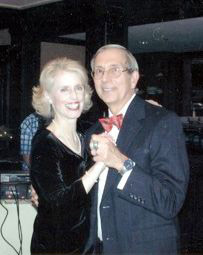 Dr. and Mrs. John R. Krause
Dr. and Mrs. John R. Krause
With the passing of Dr. Gerber, John Krause, M.D. became Acting Chairman of the Department of Pathology and was appointed as Chair of the Department of Pathology and Laboratory Medicine in 1999. Dr. Krause established the Molecular Pathology Laboratory at Tulane University Medical Center. During his tenure the following individuals joined the faculty of the department: Byron E. Crawford, M.D., Mary B. Beasley, M.D., Meena Bhattarcharjee, M.D., James Hyland, M.D.,Ph.D., Frank Bastian, M.D., Odile David, M.D., Jane Dry, M.D., Mahnaz Shahidi-Asl, M.D., Janet L. Schmid, M.D., and Alun Wang, M.D.Read More
Dr. Wang is the first appointee to the Richard J. Reed Professorship in Dermatopathology. Fellowships in Hematopathology, Dermatopathology, and Cytopathology have been valued additions to the department’s educational mission. That educational mission has recently achieved renewed recognition by an Owl Club award for best sophomore course in 2003-04 and by Dr. B. Crawford being chosen as recipient of the Teaching Scholar Award on May 13, 2004. The Department of Pathology meets its mission of resident education in its diversity including service, applied research, comprehensive interdepartmental clinico- pathologic conferences and Tumor Boards, and its basic research arms - including lung biology, molecular and cell biology, hepatopathology, gynecologic pathology and cytopathology, gastrointestinal pathology, neuromuscular pathology, hematopathology, and dermatopathology. While by comparison this department is relatively small for such diverse missions, it meets its missions through the dedication of its attendings, residents, technical staff and its supportive and capable administrative and clinical staff. Also instrumental in meeting the missions of the Department, are the former photographers, Raymond Johnson and Ellis Diaz, and the current photographer, Donald Olivares, whose efforts cannot go unrecognized.
Acknowledgements:
Great, big thanks to Beatris DeLucca, Charlene Esteves and Corlis Trepagnier for their administrative assistance, patience, and attention to detail on this project. Thanks also go to Dr. Richard J. Reed and Dr. Wallace K. Tomlinson for their suggestions and critique of this work.
References:
- Duffy, John: The Tulane University Medical Center. One hundred and fifty years of medical education. 1984, Louisiana State University Press. Baton Rouge and London.
- Tulane University of Louisiana. Medical Department Bulletins. 1900-1910.
- Tulane University of Louisiana. Medical School Bulletins. 1910-1995.
- T-Wave 1982. Tulane University School of Medicine (yearbook).
